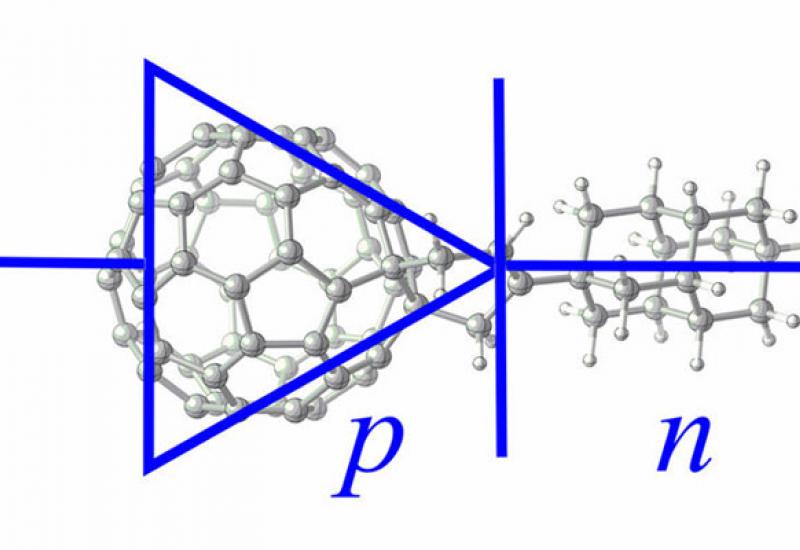In recent years, modern personal computers, tablets and mobile phones become more powerful, while their processors are rapidly decreasing in size. Elements of computer processors - transistors - have a size of about 20 nm and consist of only a few hundred atoms. Extraordinary efforts are aimed at further miniaturization of electronic means to the size of individual carbon molecules using mainly fullerenes and nanotubes. However, until now it was not possible to obtain effective molecular electronic means based on carbon alotrops.
However, diamandoids - hydrocarbons contained in the oil and diamond crystal lattice are also able to transfer electrons and organize structures. Therefore, they are attractive "candidates" to create nanostructured materials such as monochrome highly efficient emitters of electrons diodes or resistant to mechanical damage coverages.
It was set a task - to create a new nanoelectronic means by combining in one structure fullerene and diamandoid. This breakthrough innovation and challenging task in the scientific sense was successfully solved by employees of the Department of Organic Chemistry and Technology of organic substances FTC – Head of the Department Professor A.A.Fokin and Associated Professor K.D.Butova closely with colleagues in Germany (Giessen University), USA (Stanford Institute) and Belgium (Universite catholique de Luvayn). They first synthesized and studied molecules, which combine (linked by carbon’s bridge) diamond-like hydrocarbon - diamantan and fullerene. Such carbohydrate pair consisting of enriched and depleted electrons fragments is characterized by properties of molecular diode with an effective charge transfer. This material, which realizes stable pn-junction can be the basis also for FETs and other electronic components with nonlinear current-voltage characteristics.
The new hydrocarbon hybrid was applied to the metal surface and clearly showed semiconducting properties. Thus it was first obtained monomolecular diode geometric dimensions of about 1 nm.
This discovery makes it possible to use a similar device in modern processors, reducing the size of the first more than an order of magnitude.
The results of work, performed by the partial financing of MES of Ukraine, were published in the leading scientific journal Nature Comm., 2014, 5, 4877.

